
Wrocław: partners and stakeholders met up
Exchange of experiences on the food sector, with a specific focus on the current Lower Silesian initiatives of solutions in the sector
CircE Project (European regions toward Circular Economy) involves 8 partners both at regional and local scale and representatives of different European social and economic scenarios:
The project aims at strengthening the diffusion of Circular Economy (CE) in Europe, consistently with the European Commission’s Circular Economy Package (2015). In particular the project aims at helping the Partners involved to increase the capability of their Policy instruments to steer economy towards a circular model. The project carries out this task by aiming at modifying or readdressing the selected policy instruments through an exchange of knowledge/experiences among Partners, through a continuous involvement of Stakeholders and through a deeper analysis of economic system.
In the first phase (2,5 years) every Partner is intended to work on the main relevant economic sectors, identifying opportunities to develop CE as well as barriers, hampering their development. A prioritization of the identified opportunities will be produced on the base of shared criteria agreed in the project process. Policy options, already provided or potentially provided by the policy instruments, will be analyzed to find out best practices or new potential effective policy options.
In the second phase (2 years) the project will directly involve the political level to integrate the main findings into the selected policy instruments, modifying or reorienting them. In this phase effective implementation of the action plans will be monitored.
€1,953,545.00
Environment and resource efficiency
The POR Lombardia ERDF is based on the Europe 2020 jobs and growth strategy, aimed to pursue a smart, sustainable and inclusive growth and reach social, economic and territorial cohesion. The POR Lombardia ERDF is also the most suitable policy instrument for the implementation of the EU Action Plan’s goals for the Circular economy [EU COM(2015) 614] because it:
- approaches the integration of regional policies, in order to improve their effects in:
>restarting growth;
> increasing the productivity of the regional private and public system;
>increasing the competitiveness of enterprise and territorial system.
- considers innovation as a key tool to support these challenges;
- sees Public Demand to support innovation as a potential tool to start up and scale up new activities;
- states the need to increase occupation, considering green economy as an opportunity for that;
- supports complex investments projects;
- aims environmental protection and sustainability principals.
Although all these issues are strictly linked with the Circular Economy’s strategies, the EU Action Plan for Circular Economy has been adopted after the approval of the POR Lombardia ERDF; therefore this instrument needs to be reoriented in order to help more significantly the change of the local productive system towards Circular Economy.
The PO FEDER Catalonia 2014-2020 (POR_CAT), adopted by the European Commission on 2015, is the roadmap for Catalonia towards achieving the objectives of the Europe2020 Strategy and prioritizes innovation and knowledge (40.9%), business dynamism (37.9%) and green economy (21.2%). Thematic Objective (TO) 3 includes the prioritization in green economy and eco-innovation in most of investment priorities. The Specific Objective 3(d)1, includes programs to improve the competitiveness of companies through the: efficient use of resources, implementation of green technologies, reduction of environmental impacts and production of more sustainable goods and services. It is stated that this shall include actions to improve the competitiveness of SMEs through the development of actions promoting circular economy. TO 1, 4 and 6 also contribute to implement the several key aspects regarding circular economy. The POR_CAT is a policy instrument strongly suitable for the implementation of the recently adopted EU Action Plan for the Circular economy [EU COM (2015) 614 final, 2/12/2015]. Therefore the POR_CAT needs to be reviewed and sectorialized across the Regional Smart Specialization Strategy (RIS3CAT) priority sectors, in order to a) integrate circular economy in a cross-cutting manner and b) design policies and actions to bring circular economy on the ground, which are the goals of the CircE project.
The document was adopted by the Provincial Board in 2015. It was drafted as an attachment to the Regional Innovation Strategy for Lower Silesia Province for the years 2011-2020 defining challenges the region faces in terms of knowledge-based economy and innovation growth in Lower Silesia. Strategic Framework for Smart Specialisation of Lower Silesia indicates areas of smart specialisation of Lower Silesia along with verification mechanisms and programmed process of entrepreneurial discovery. Its purpose is to help the region adhere to the European Commission guidelines on Smart Specialisations, thereby helping Lower Silesia fulfil the criteria of ex ante conditionality in the context of funds for research and innovation under the Regional Operational Programme 2014-2020. There are six smart specialisations that constitues main strengths of Lower Silesia Voivodeship: Chemical nad pharmaceutical industry Spatial mobility High Quality Food Natural resources and recyclable materials Machines and equipment manufacturing, materials processing technology Information and communication technologies (ict) The EU Action Plan for Circular Economy has been adopted after the approval of Strategic Framework for Smart Specialisations of Lower Silesia; therefore this instrument needs to be reoriented in order to help the change of the local productive system towards Circular Economy more significantly.
OP ERDF 2014-2020 of the East-Netherlands is a joint programme of the provinces of Gelderland and Overijssel (East-Netherlands). It delivers grants to support SMEs to generate more turnover out of innovative new products, and employment within technology driven sectors. The region deploys the ERDF-budget for the promotion of innovation and low-carbon economy. The ERDF-projects for promotion of innovation focus on the S3-sectors identified in the East-Netherlands: agrofood, health, high-tech systems & materials, cleantech as well as to the cross-overs between these sectors on the one hand and ICT, water, chemicals, creative and producing industry on the other hand. The transition to a low carbon economy is supported in all business sectors. Relevant aspects are reduction of CO2-emissions, growing use of renewable energies, more efficient use of energy sources and optimale use and reuse of natural resources in the environmental and technology sector. Besides that projects that aim to realize CE activities within the manufacturing industry are being supported. These projects should be promoted because the programme-partners expect the most impact of these projects on the regional’s economy and social tissue. They have a knowledge intensive character that is very coherent with existing companies and manpower, and create high value added products and services, which makes them protrusive for the region, by multiplying effects and rollout of sustainable/low carbon solutions.
The Mayor of London’s Environment Strategy is a policy instrument strongly suitable for the implementation of the EU Action Plan’s goals for the Circular economy [EU COM(2015) 614 final, 2/12/2015]. It is a statutory strategy under the Greater London Authority Act 2007. The objective of the Mayor of London’s Environment Strategy is to provide leadership and policy guidance on environmental issues across the Greater London area . Currently there are multiple measures relating to different environmental issues; the most interesting for the project are “municipal waste” and “business waste” for which the principles of circular economy are more profitably applicable. Moreover, it is anticipated that following the election of a new Mayor in May 2016, all topic areas will be reviewed and, following a change in legislation, will be reformed as a joint environment strategy. This is a rare opportunity to influence the development of the new strategy and ensure that circular economy principles of EU Action Plan are built in from the start. This will be achieved by introducing new measures within the strategy that will encourage circular economy behaviours as well as demonstrations projects where appropriate. It is anticipated that we will also try and influence other London based plans such as the London Plan (key development document for the capital) and the Economic Development Strategy for London.
The PO FEDER 2014-2020 contributes to the realisation of the sustainability goals and a strategy of green, smart growth of the Union and with the realization of economic, social and territorial cohesion in the Nord – Pas de Calais. The region has wished to reinforce research and focus on sectors of high potential through the Strategy of Research and Innovation for Intelligent Specialization (SRI-SI). The SRI-SI requires to mobilize the OT1 and OT3 of the OP in order to support actions to facilitate the transfer of research results towards the businesses. This multi OT axis approach (OT 1 and 3), will make it possible to improve the attractiveness and the robustness of the area by coupling logics of repair and development. The regional strategy aims to concentrate scientific excellence to serve companies of North – Pas-de-Calais in the 6 axes identified by SRI-SI. In the 4th axis the design of new and high-performance materials, bio-based products, , the upgrading of by-products and recycling as well as the resource efficency to support CE are supported on behalf the SRI-SI. After the EU action plan for CE adopted in December 2015, it is necessary to re-examine the objectives because the CE boundaries is much broader than materials and recycling dimension; so the OP needs to be reviewed across the Regional Smart Specialization Strategy (RIS3). Regionale economic priority sectors needs to be defined in order to design policies and actions and set-up CE in the region.
The main objective of the Program is to contribute to the sustainable development through the implementation of an integrated waste management system, decreasing the influence of waste on the environment, using the waste as resource, increasing investments for waste management and increasing the polluter responsibilities. This policy instrument suitable for the implementation of the recently adopted EU Action Plan for the Circular economy [EU COM (2015) 614 final, 2/12/2015]. Therefore it needs to be readdressed in order to integrate circular economy in a cross-cutting manner and define policies and actions to set-up CE in Sofia. In particular, the following measure of the Program can be considered coherent with the EU policy and eligible to deal with: preparation and implementation of a project for establishment of a municipal centres for reparation of old equipment and furniture and preparation for re-use. The project is just launched and will develop a feasability study defining the sites, equipment, business model toestablishan operating company for recovery and re-use. The funds for the the construction of the plants and purchasing of equipment will be provided by the Operational programme Environment 2014-2020 ( OPE). With two centres of that kind, Sofia municipality should decrease the quantity of bulky waste landfilled, reducing especially WEEE production and stimulating the re-use of this products before they become waste, as requested by EU hierarchy.
OP is the key implementing document which presents the priority axes of those investment priorities where Slovenia will invest the EU Cohesion Policy funds with the objective of realising national EU 2020 targets. The elements related to the circular economy (CE) can be found in the priority axes 1 and 3. The 1st priority axis is related to the R&I, the measures in this priority axis relate, among others, to support the business in the areas like eco innovation and other measures that can support the transition towards resource efficiency and CE. Priority axis 3, which is devoted to the area of entrepreneurship, will support companies towards achieving greater resources and energy efficiency. While the OP provides framework, the Slovenian smart specialisation strategy specifies more specifically, the areas where the funding will be focused. One of the priority areas is also support for “the networks for the transition to circular economy”, additionally the priorities were also recognised in sustainable food production and the tourism. The OP also includes the measures for the transition towards the CE under the priority axes 9, which also covers the investment priority related to the CLLD strategies. Here, the activities that are contributing to reducing the greenhouse gas emissions and supporting the establishment of low-carbon and zero waste communities, thereby promoting environment-friendly economy based on efficient use of resources, could be supported.

Exchange of experiences on the food sector, with a specific focus on the current Lower Silesian initiatives of solutions in the sector
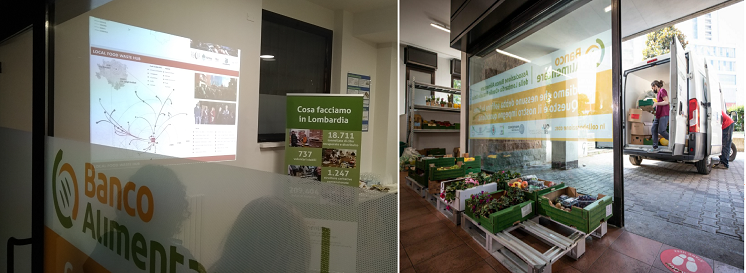
The City of Milan won the first edition of the international award “Earthshot prize” for the best solutions to protect the environment

CircE Partners will continue their journey, working together on textile and food
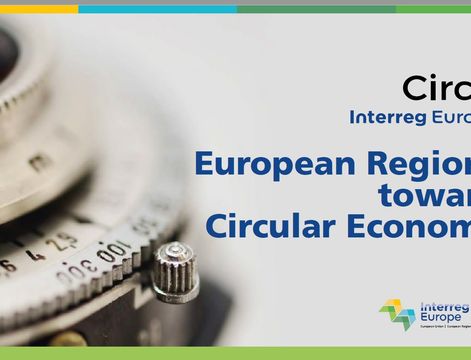
The CircE final publication is ready to be downloaded, here, in our web site Library
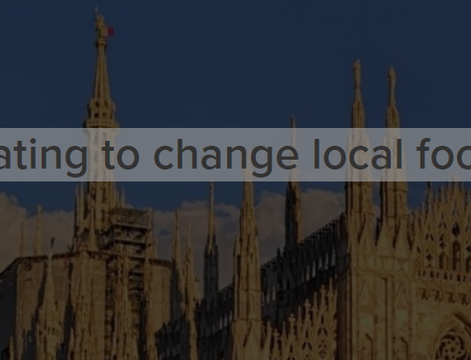
The story and the peculiarities of the Milano food policies are analysed in a nice article by EMF.

The Policy Learning Platform now hosts several Lombardy Region's good practices.

How Lombardy region boosts Circular Economy

The Interreg Europe secretariat is currently looking for a project finance officer.
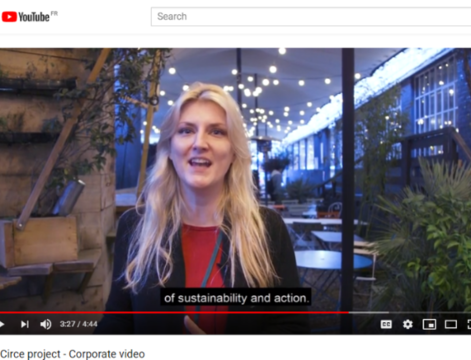
Discover here the new Circe video
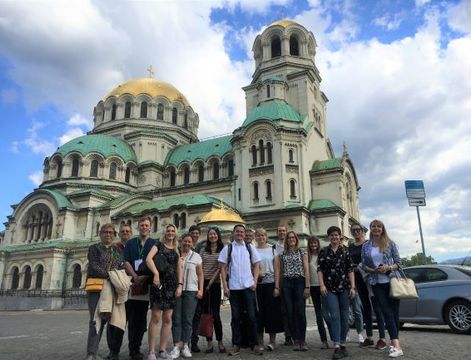
Throwback to our last meeting in Sofia (Bulgaria)